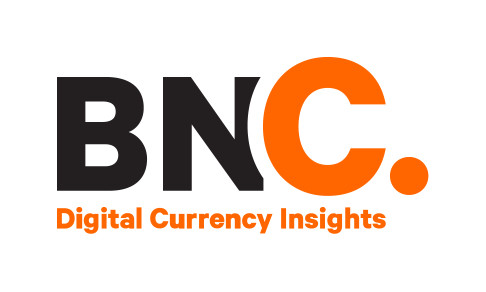Post-Holiday Crash: The crypto questions we're all asking
Brave New Coin CEO Fran Strajnar announces the General Taxonomy for Cryptographic Assets, a framework that will make it easier to analyse data.

Recent turmoil in both the traditional equities and crypto markets have spurred a major area of focus and discussion regarding the direction of the cryptographic asset class.
There are three overarching themes that capture the current climate. The first is regulation. As the crypto world matures, what does its collision with the legal work look like in terms of accounting, taxation, banking, and capital market regulation? Second, the burning question of scalability. With blockchain coming out of the lab and into the wild in late 2017, is crypto a bubble — or will the technology prove to scale? Finally, the security issue. The bounty for hackers and scammers is huge. When will the infrastructure finally mature to make crypto grandma-proof?
At Brave New Coin, we've made a name for ourselves by producing market data, APIs and Indices for the crypto world, and we're lucky to count clients like Amazon and Thomson Reuters in our corner.
Our raison d'être is simple: cryptographic assets are here to stay and market participants need tools to distinguish between volatility — namely hype, hot air, and sentiments — and changes in the underlying fundamentals of the assets.
Against a backdrop of volatility and a good dash of uncertainty, we're launching the General Taxonomy for Cryptographic Assets, a framework that will make it easier for industry stakeholders to obtain and analyse data to better inform investment decision making and analysis.
The Market Capitalization Debate
A great deal of media scrutiny has been dedicated towards questioning how to effectively value cryptographic assets. There are three sides to this debate. The first holds that market capitalization should be calculated by multiplying the number of tokens by the value of the tokens, borrowing from traditional equity valuation principles. The second holds that only the circulating supply of tokens should be included in the above calculus. Firms rarely circulate 100% of token supply immediately; 16M/21M bitcoins are currently in supply. The final perspective is that both approaches are misguided given that cryptographic assets do not behave like companies and therefore should not be valued the same way.
Flawed though it may be, market capitalization is an investor favorite as it is readily available and requires no quant skills to understand. Our Taxonomy intends to empower investors by providing more data, so investors can assess market cap using either of the above methods and discover further metrics as needed.
Real world applications:
Asset managers will be able to make better investment decisions. To name one example, assets performance can be tracked by technical specifications, including Proof of Stake, Privacy Tokens, and so forth; by industry sectors, including decentralized exchanges, distributed computing, or financial services; or economic properties, such as tokenized securities or payment systems, to identify potential opportunities.
Regulators, academics, and everyday crypto enthusiasts can also benefit from the real-world applications in the Taxonomy, where Crypto X can be compared to Crypto Y. Our view is that enabling participants to compare apples to apples will reduce guesswork and allow everyone to compete on a level playing field.
These use cases in the Taxonomy will allow market participants to begin referring to cryptographic assets using common terminology, reducing the element of speculation and case by case evaluations. This will make it easier to spot bad actors — something we can all agree is long overdue.
All things considered
Today, there is unanimous disagreement about what data is relevant when making investment decisions in the crypto space. This is partly due to the speed at which cryptographic assets have made their way into the national consciousness, and partly because there's disagreement about what information is needed to make judgment calls on individual crypto assets. Our experience collaborating with existing industry stakeholders to develop and establish best practices has led us to consider technical, monetary, legal, and governance information. We're excited to be sharing these practices with the world in the form of the Taxonomy.
New market participants can use the Taxonomy to get a bird's-eye view of the key components that make up a crypto asset: a review of the blockchain employed (a new one versus using an existing one), the underlying protocol (privacy configurations or smart contract support), governance, target market, and many other metrics.
Advanced users can focus on crypto assets that provide passive income, or filter by hashing algorithm in the case of transaction validators, or miners. Based on their level of familiarity in the ecosystem, developers can analyse the scripting language behind a crypto asset and original codebase.
A Brave New World
Brave New Coin was founded on the belief that there should be a common set of tools to understand cryptographic assets. As cryptocurrencies and blockchain move from deal sheets to Fortune 500 companies' balance sheets, using industry standard terminology to look under the hood of cryptographic assets will become a must-have. The General Taxonomy is a living framework that will continue to adapt to industry and market conditions, expanding our already wide range of data solutions.
We welcome feedback, comments and requests.





















